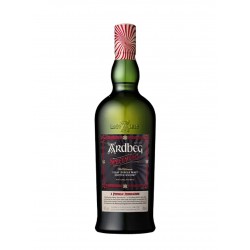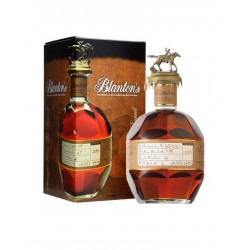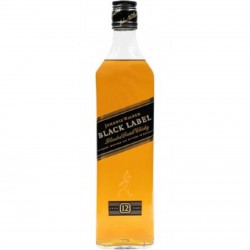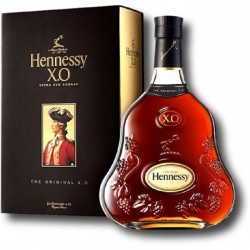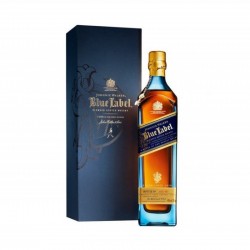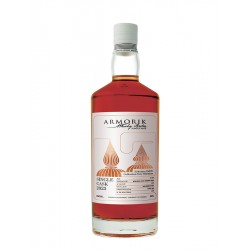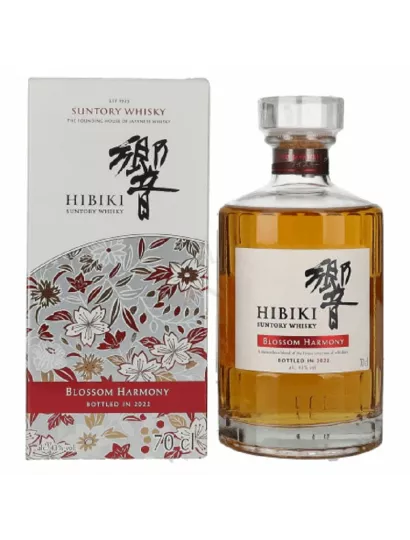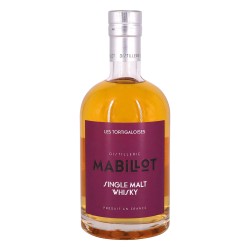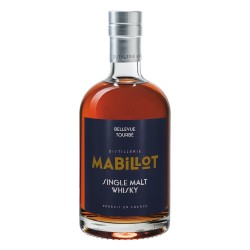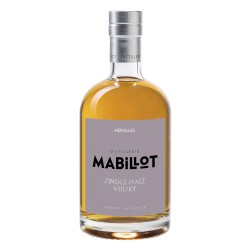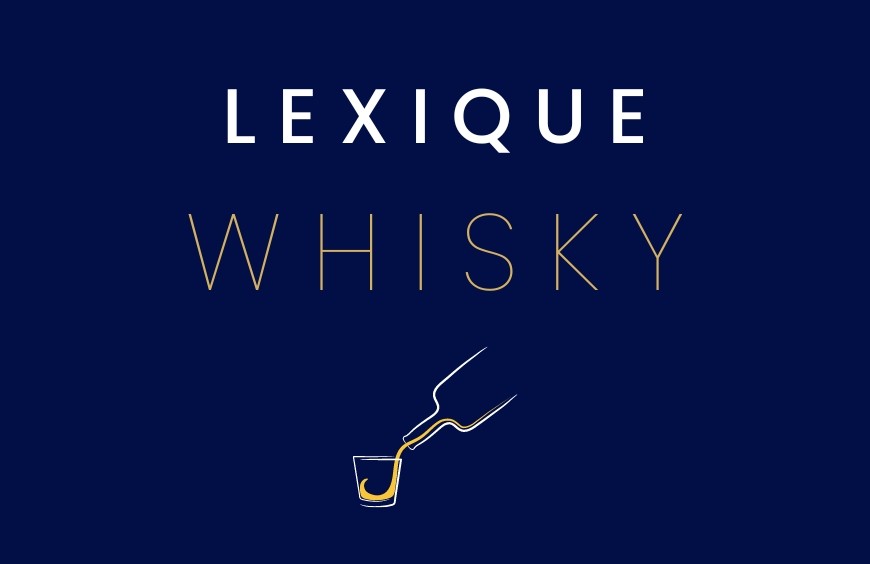Complete Whisky Glossary: Essential Terms and Definitions
Immerse yourself in the fascinating world of whisky by exploring our complete glossary of the most commonly used terms in the whisky industry. Whether you're a curious beginner or a seasoned enthusiast, this guide will help you understand the subtleties and nuances of this iconic beverage. Cask Strength, Pure Pot Still, Single Malt, Grist, Vatting... soon all these words will hold no secrets for you.
A
Affinage: Method involving transferring the whisky during maturation to a different barrel than the one originally used. Ports, Madeira, sherry, sherry, or even wine or rum barrels are used for this final aging period, which typically lasts between 6 months and 2 years.
Alambic: An essential apparatus used in the whisky distillation process. Two main types of stills are commonly used: the pot still, also known as Pot Still, is used for discontinuous distillation, while the column still, sometimes called Coffey Still or Patent Still, is used for continuous distillation, usually for grain whisky production.
Assemblage: Technique of blending whiskies before bottling, typically applied to blends. Whiskies of different types from several distilleries are combined in tanks or barrels to refine the blend before bottling.
B
Barrel: Wooden container made of oak that houses the whisky during maturation. There are several models, depending on the capacity and the wood used (European or American oak). In the United States, they are called barrels and contain between 180 and 200 liters.
Blend: A blend is a combination of malt whiskies and grain whiskies, offering a harmonious mix of flavors and characteristics.
Blended Malt: Blended Malt is a blend of several malt whiskies from different distilleries.
Bourbon: American whiskey typically produced in Kentucky. Its blend must consist of a mix of grains containing at least 51% corn. However, barley, malt, or rye may also be found in its composition. Aging in new oak barrels is mandatory.
Bottling: Bottling refers to the process of bottling whisky. It can be official, carried out by the distillery itself, or independent, carried out by companies specializing in purchasing, maturing in barrels, and bottling whiskies from different distilleries.
Brut de Fût: Malt whiskies sold at their natural strength without adding water before bottling. Depending on the maturation time, they range from 57% to 63% ABV.
C
Cask Strength: Malt whiskies sold at their natural strength, without adding water before bottling. Depending on the maturation time, they range from 57% to 63% ABV.
Cask Strength: Whiskies bottled at full strength, also known as Cask Strength, are bottled at their natural degree, without adding water before bottling. Their alcohol content can range from 57% to 63% ABV.
Cœur de chauffe: The alcohol fraction recovered during distillation, once the heads and tails of distillation are removed. The heart of the run constitutes the noble part of the distillate and is also called new spirit. It typically has an alcohol content of around 68% ABV.
Corn Whiskey: Corn whiskey is made from a minimum of 80% corn. This results in a lighter and more rustic alcohol than bourbon, and unlike the latter, aging in new barrels is not mandatory.
Cut: During distillation, the master distiller divides the product into three factions called cuts, to separate the alcohol to be kept from the one to be redistilled. The heads and tails of distillation are returned to the still, while the third faction, the heart of the run, corresponds to the part to be kept.
D
Distillate: White alcohol with an alcohol content of about 70% ABV. It is then diluted to 63-64% ABV before being put into barrels for maturation. In the USA, the distillate is commonly called Bourbon.
Distillation: Distillation is the essential process in whisky production, which involves extracting alcohol from the wash (fermented wort) by heating and condensing it in a still.
Distillation Head: First fraction of alcohol produced during distillation. Like the tails, the heads of distillation cannot be used as they are and must be analyzed before being mixed with Low Wines and redistilled.
Distillation Tail: The last fraction of alcohol produced during a batch distillation, the distillation tails give off an unpleasant aroma. This distillate is then analyzed, mixed with Low Wines, and redistilled.
Double Wood: Describes whiskies that have aged in two different types of barrels. During maturation, the distillery may, for example, use bourbon barrels for several years and finish with sherry barrels.
F
Fermentation: Fermentation involves transforming the sugars in a mixture into alcohol by adding yeast. It takes place in washbacks (large tanks) where the wash (fermentation wort) begins to bubble thanks to the yeast. This wort must be constantly stirred to avoid excessive temperature rise.
Filtration: Filtration precedes bottling. It involves removing impurities from the whisky using a succession of cellulose filters. This operation, which is usually carried out cold, removes some fatty substances that are rich in aromas. Increasingly, unfiltered versions are encountered to obtain thicker and more complex whiskies. These are then referred to as Un-chillfiltered or Non chill-filtered whiskies.
Finish: Method involving transferring the whisky during maturation to a different barrel than the one originally used. Ports, Madeira, sherry, sherry, or even wine or rum barrels are used for this final aging period, which typically lasts between 6 months and 2 years.
G
Grist: Ground malt, resembling flour, mixed with hot water to form the mash. It is used in the preparation of fermentation wort.
H
Hogshead: Oval-shaped barrel of 250 liters resulting from the dismantling and reassembly of old American barrels that have contained bourbon. To obtain this capacity, new oak staves are added.
K
Kiln: Furnace with a perforated floor for drying green barley during the malting process.
L
Low Wines: Alcohol obtained after the first distillation, with a strength of 21% ABV.
M
Malting: Process of transforming barley into malt by triggering the germination of a cereal, then stopping it, which increases its starch content. Under the effect of moisture and heat, barley begins to germinate and turn into green malt. It is then dried to produce malt.
Mash: Mixture of grist and hot water.
Mashbill: Combination of grains used in the production of whisky. In the United States, the law imposes constraints on the percentage of grains used for the production of bourbon, for example.
Mashtun: Large round vessel in which the grist is mixed with hot water to convert the starches in the grains into sugars. The resulting sugary liquid is called wort.
Maturation: Stage during which the whisky in a barrel acquires its character. Some unfavorable elements are removed by evaporation, and the spirit interacts with the wood of the barrel. The minimum maturation period varies depending on the country, three years for Scotland and Ireland, two years for the United States.
Middle Cut: Alcohol fraction recovered during distillation, once the heads and tails of distillation are removed. The heart of the run constitutes the noble part of the distillate and is also called new spirit. It typically has an alcohol content of around 68% ABV.
N
Non Chill-filtered: Refers to a whisky that has not been cold-filtered during bottling to remove any possible sediment. This technique allows for denser, oilier, and more complex whiskies with a richer aromatic palette. On slightly chilled bottles, the whisky may become cloudy, which does not affect its taste qualities.
P
Peat: Peat is composed of decomposing algae, heather, grass, and moss. It is used in drying kilns during barley malting to impart a phenolic aroma and a smoky flavor to the final whisky. Whiskies resulting from this process are called peated and are appreciated by many enthusiasts worldwide.
Phenol: The term phenol refers to aromatic chemical compounds that impart smoky and medicinal flavors to malt whisky. The resulting whisky is referred to as phenolic.
Pot Still: Traditional Scottish or Irish copper still with a swan neck. Used for the distillation of single malt, it often has a pear, onion, or bell shape. Its size varies depending on the distilleries, and the larger the still, the lighter the whisky.
PPM (Parts per Million): This is the unit of measurement used for phenol. Highly phenolic whiskies made from peated malt, such as Lagavulin, Laphroaig, or Ardbeg, have a concentration ranging from 35 to 50 ppm, while unpeated whiskies range from 2 to 3 ppm.
Pure Malt: Pure malt whisky is a blend of whiskies made from malted barley from one or more different distilleries. It is also known as vatted malt.
Pure Pot Still: Also known as Irish Whiskey, Pure Pot Still is made from a blend of half malted barley and half unmalted barley, distilled three times in a Pot Still.
R
Reflux: Process by which highly alcoholic vapors fall back into the still instead of passing into the swan neck and condenser. By falling back, these vapors are redistilled and become purer and lighter. Depending on the size of the still, the reflux will be more or less significant and will influence the character of the whisky. The longer the still's neck, the more significant the reflux, and the lighter the whisky. Conversely, a bulging still will produce a richer whisky.
S
Saint Patrick: Irish religious holiday considered the national holiday. Saint Patrick was a monk who became the patron saint of Ireland and, according to legend, introduced the art of distillation to Ireland. Saint Patrick's Day is celebrated every March 17th worldwide, and tradition dictates wearing at least one green garment and consuming Irish dishes and beverages.
Scotch Whisky: Also known as Scottish whisky, Scotch is a whisky made from a very simple blend: malted barley, yeast, and water. The distillate must not exceed 94.8% ABV before aging in Scotland in oak barrels for at least 3 years. Bottling must be done at an alcohol content equal to or greater than 40% ABV.
Single Cask: Raw malt from a single barrel, without any blending with another barrel. A must-have.
Single Malt: Whisky made from malted barley and from a single distillery.
Small Batch: Designation indicating the use of a limited number of barrels when blending whisky. Historically belonging to American whiskey, the Irish and Scots also use this method today.
T
Tourbe: Peat is composed of decomposing algae, heather, grass, and moss. It is used in drying kilns during barley malting to impart a phenolic aroma and a smoky flavor to the final whisky. Whiskies resulting from this process are called peated and are appreciated by many enthusiasts worldwide.
Triple distillation: Generally, distillation is carried out in two phases. The first in a wash still (or first heating still), and the second in a spirit still (or second heating still). Carrying out a third distillation, a traditional method in Ireland, allows for a purer and creamier alcohol.
U
Un-chillfiltered: Refers to a whisky that has not been cold-filtered during bottling to remove any possible sediment. This technique allows for denser, oilier, and more complex whiskies with a richer aromatic palette. On slightly chilled bottles, the whisky may become cloudy, which does not affect its taste qualities.
V
Vatting: Blending technique for whiskies from the same distillery from different selected barrels based on their ages or origins.
W
Wash: Liquid resulting from the addition of yeast to the wort, which ferments to produce a kind of beer. The wash typically has an alcohol content of about 7% ABV. It undergoes a first heating in a wash still to produce Low Wines.
Wash Still: Traditional first heating still in which the wash is transformed into Low Wines.
Washback: fermentation tank, nowadays made of stainless steel but formerly made of wood, in which yeast is added to the wort to produce the wash.
Whiskey: Term referring to whiskeys produced in Ireland and the United States. The addition of the "e" to the word whiskey was adopted by the Irish in an attempt to differentiate themselves from their Scottish neighbors.
Whisky: Term referring to whiskies produced mainly in Scotland, Canada, and Japan. The Gaelic origin of the word whisky is Uisge Beatha.
Wort: Sugary liquid resulting from the mixture of grist and hot water in the mashtun.

